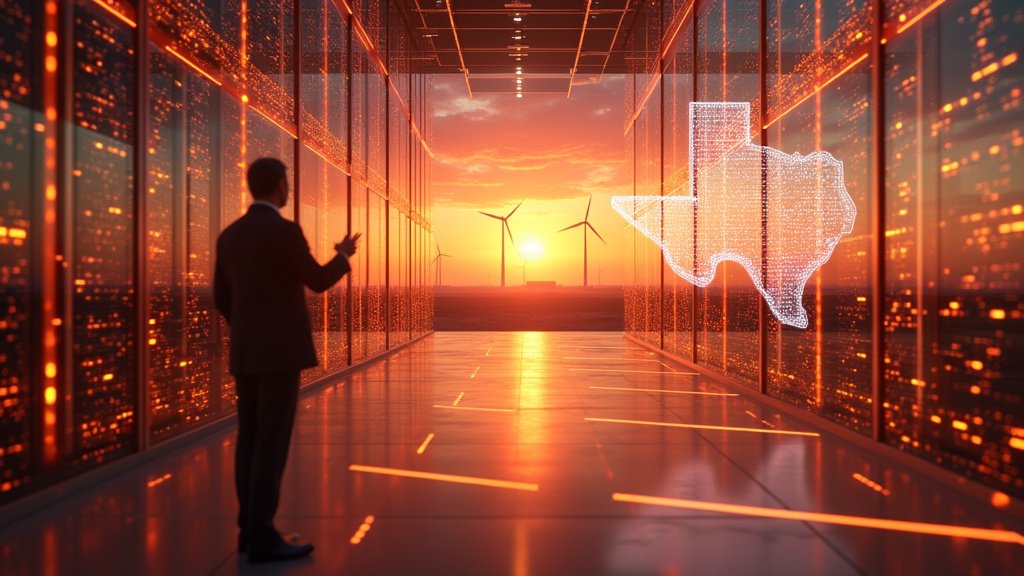Texas Legislature Grapples with Grid Resilience: A Deep Dive into Senate Bill 200
A pivotal legislative effort aimed at significantly bolstering the stability and resilience of Texas’s beleaguered electric grid is currently taking shape in the state capitol. State Senator Jane Doe has introduced Senate Bill 200 (SB 200), a comprehensive and ambitious proposal designed to prevent future grid failures akin to those experienced during severe weather events.
This legislation directly confronts the vulnerabilities exposed in the Electric Reliability Council of Texas (ERCOT) grid, which serves over 26 million Texans. At its core, SB 200 proposes a multi-pronged strategy centered on substantial investment in energy storage technology, particularly advanced battery systems, alongside improvements to transmission infrastructure and demand management.
Mandating Investment in Advanced Battery Storage
Perhaps the most impactful provision of SB 200 is its mandate for utility companies operating within Texas to make significant investments in battery storage systems. The bill sets a clear and aggressive target: a cumulative increase of 5,000 megawatts (MW) of battery storage capacity across the state’s grid by the year 2030. This represents a substantial enhancement to the current storage capabilities on the ERCOT system.
The rationale behind this mandate is rooted in the operational benefits of battery storage. These systems can rapidly store excess electricity generated during periods of high production (such as from solar power during midday or wind power during windy periods) and discharge it quickly during times of peak demand or low generation. This flexibility is crucial for stabilizing the grid, mitigating the intermittency of renewable sources, and providing critical power reserves during emergencies.
Proponents argue that a 5,000 MW increase in dispatchable storage capacity would significantly enhance grid reliability, offering a buffer against sudden drops in generation from any source, whether natural gas, coal, wind, or solar. It could help prevent or shorten power outages by providing instantaneous power when traditional generation struggles to meet demand or faces operational issues caused by extreme weather.
Streamlining Transmission and Incentivizing Demand Response
Beyond battery storage, SB 200 addresses other critical aspects of grid functionality. The bill includes specific provisions aimed at expediting permitting processes for new transmission lines. The expansion and modernization of the transmission network are seen as essential for effectively moving power from where it is generated to where it is needed, especially as generation sources become more geographically diverse and distributed.
Bottlenecks in transmission can lead to power being stranded or generation sources being curtailed, even when electricity is available. By accelerating the permitting process, SB 200 seeks to remove bureaucratic hurdles that can delay vital infrastructure projects, thereby improving the overall efficiency and resilience of the grid.
Another key component of the bill focuses on managing electricity demand, particularly among large industrial users. SB 200 proposes financial incentives designed to encourage these high-consumption entities to implement demand response programs. Demand response involves voluntarily reducing electricity consumption during periods of peak grid stress in exchange for compensation or other benefits.
Industrial users, with their significant load, offer substantial potential for demand reduction that can quickly alleviate pressure on the grid during critical times. The incentives outlined in the bill aim to make participation in these programs economically attractive, transforming large energy users from potential burdens during peak events into valuable assets for grid stability.
The Legislative Journey Begins: Committee Hearing Scheduled
Senate Bill 200 is set to begin its formal journey through the legislative process very soon. The bill is scheduled for its first committee hearing before the Senate Business & Commerce Committee on February 25, 2025. This hearing will be a crucial step, providing senators, stakeholders, and the public an opportunity to scrutinize the bill’s provisions, hear testimony from various interested parties, and propose amendments.
The Senate Business & Commerce Committee holds significant sway over legislation pertaining to utilities, energy, and economic regulation in Texas, making it the appropriate initial venue for such a comprehensive grid bill.
Facing Initial Opposition and Future Challenges
As with any significant legislative proposal impacting a complex and vital industry like energy, SB 200 is not without its critics and challenges. Initial reports indicate that the bill is facing opposition from some energy producers. Their primary concern centers on the compliance costs associated with the mandates, particularly the substantial investment required for battery storage systems.
Energy producers argue that the financial burden of installing and maintaining thousands of megawatts of battery storage could be significant and could potentially impact electricity prices or place undue strain on company finances. They may advocate for alternative mechanisms to achieve grid stability, argue for longer compliance timelines, or seek public funding to offset some of the mandated investment costs.
The debate surrounding SB 200 is expected to be robust, reflecting the diverse interests within the Texas energy market, including generators, transmission operators, utilities, industrial consumers, residential customers, and environmental advocates. The bill’s path through the legislature will likely involve intense negotiation and potential modifications as it moves from committee to the Senate floor, and subsequently to the House of Representatives if passed by the Senate.
Ultimately, SB 200 represents a significant policy proposal aimed at learning from past grid failures and proactively building a more resilient energy future for Texas. Its success hinges on navigating the legislative process and balancing the ambitious goals of grid stability with the economic realities faced by the energy sector. The hearing on February 25, 2025, will mark the formal commencement of this critical discussion.






